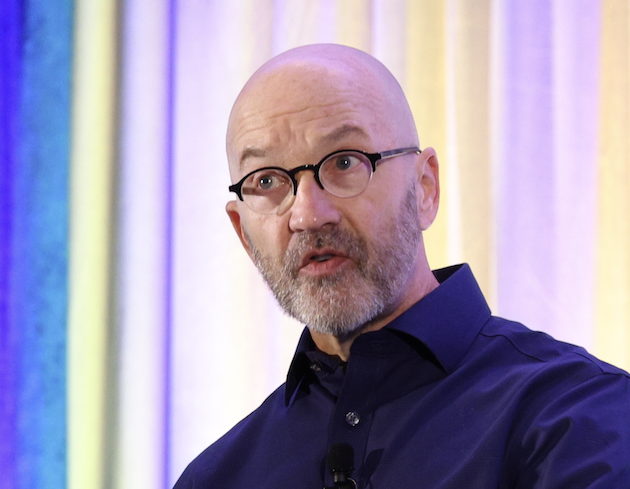Courts appear to be affirming what pharmacists have long known: compounding GLP-1 medications for patients who can’t access the brand-name versions is a legal, responsible and necessary form of care.
In three federal cases — one against a pharmacy and two against telehealth platforms — judges have openly questioned drugmaker Eli Lilly’s campaign to paint compounding as unlawful. A Delaware judge dismissed Lilly’s case against Strive Pharmacy for lack of standing and, in dicta, cast doubt on the company’s entire legal theory. Another judge, in throwing out Lilly’s lawsuit against Willow Health, pointedly wrote that personalized, supervised compounded GLP-1prescriptions are lawful. And in the Lilly v. Mochi case, the court’s questioning has suggested the same skepticism.
In short, courts aren’t buying the idea that compounding pharmacies are the problem. They see what’s really happening — pharmacists and prescribers filling a gap in patient access within the clear bounds of law.
Over three years, the compounding of GLP-1 medications has been cast as a public-health crisis by some who take their lead from drug-manufacturer talking points. The storyline usually goes like this: “Compounders are skirting the law, pushing unsafe drugs, and putting patients at risk.”
It’s a punchy narrative, but it’s also untrue.
The compounded-GLP-1 phenomenon is not a scandal. It’s a healthcare success story — a demonstration of how intentional federal policy has functioned as designed. While manufacturers struggled to meet demand, and patients found themselves unable to obtain GLP-1s, compounding pharmacists, working with prescribers, stepped in to ensure patient access to what is undeniably a wonder drug. That they have done so with a safety record comparable to the branded products is central to that story.
Pharmacy compounding is no loophole in the law. It is a long-recognized, highly regulated practice designed to fill gaps when an FDA-approved drug is either unavailable or judged — by a licensed prescriber, not a pharmacist — to be unsuitable for an individual patient. Pharmacists prepare those medications using ingredients sourced from FDA-registered facilities (via FDA-registered resellers or wholesalers) and compound them under rigorous U.S. Pharmacopeia standards.
The “personalization” that critics deride? It’s not a workaround; it’s the point. A prescriber may adjust the dose, alter the formulation to improve tolerability, or change the route of administration for a needle-averse patient. Some critics miscast this as a money grab by pharmacists, but, in reality, it’s prescribers exercising clinical judgment, case by case, that the customized drug makes a “significant difference” for a patient. And for many of those prescribers, the customized GLP-1 is the only practical way to get the therapy in the hands of patients who otherwise would be unable to access those life-changing medications.
Yes, rogue actors have exploited demand, selling dubious, unregulated products online. No responsible pharmacist defends that. Drugmakers’ conflation of illicit substances with licensed compounding pharmacies is unfair and dangerous. State-licensed compounding pharmacies don’t acquire illicit substances from offshore sources and sell them on bogus websites. Instead, they operate within a tight framework of oversight and safety standards. Blurring those lines harms the patients who rely on compounded therapies.
Compounded drugs are not FDA-approved — but because they are custom-made, how could they be? Federal and state laws instead mandate a safety and compliance framework suitable for the bespoke therapies compounding pharmacies prepare. USP compounding standards are rigorous, although they differ appropriately from those applied to mass-produced commercial drugs.
Critics argue that compounders are engaged in “mass production.” They’re not. Sterile injectable GLP-1s may only be compounded in batches of 250 units or fewer under USP — orders of magnitude smaller than drugmakers’ output, precisely because compounded preparations, prepared for an individual patient, have shorter shelf lives.
Another red herring is ingredient quality. Some allege compounders use inferior active pharmaceutical ingredients. The FDA has not said that. In fact, the agency recently published a “Green List” of validated GLP-1 API manufacturers — all FDA-registered, inspected, and cGMP-compliant. If the agency had concerns, that was the moment to raise them. It did not.
Critics also cite what they describe as a troubling number of adverse-event reports associated with compounded GLP-1s. Yet, FDA’s reporting system shows those events largely mirror the side-effect profiles seen with the commercial products. A 2024 FDA alert noted reports of adverse events but did not investigate them — so there is no evidence that the compounded product caused the event. (The same is true for adverse events reports associated with the FDA-approved versions; anyone can submit a report, substantiated or not.)
More recently, the FDA acknowledged that adverse-event patterns for compounded GLP-1s are similar to those for the approved drugs. If compounded GLP-1s posed a crisis, the data would show that. They don’t.
Some have accused the FDA of regulatory neglect, given the current scale of GLP-1 compounding. The agency’s posture has been one of appropriate restraint, allowing the law to function as intended. By exercising discretion rather than slamming the door, the FDA has prioritized patient access to therapies that are undeniably life-enhancing. That’s not lax enforcement; it’s pragmatic stewardship of public health.
Instead of vilifying compounding pharmacies, we should recognize— as did the judges in those three aforementioned lawsuits — the vital role compounding has played in protecting patient access to these therapies through extended shortage and accessibility issues.
Moreover, suppose patients are turning to compounded medications because brand-name drugs are unavailable or inaccessible. In that case, the real question isn’t why compounding exists — it’s why manufacturers and the healthcare system have failed to ensure that accessibility.
Until that happens, pharmacists will continue to do what they have always done: care for their patients with safe, legal and personalized therapies. That’s not scandalous; that’s pharmacy practice at its best. Here’s to more courts affirming that fact.


